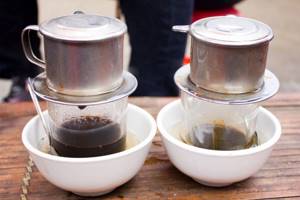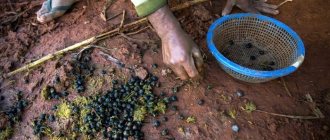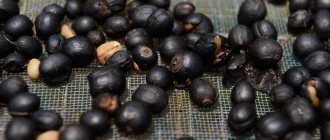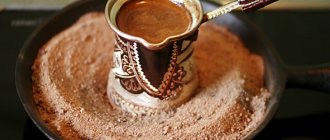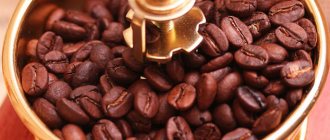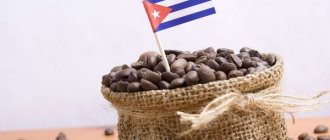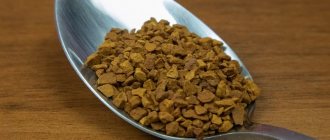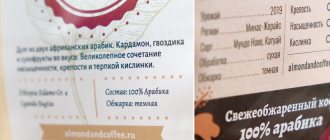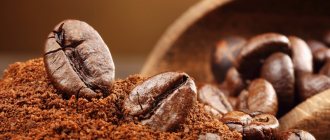The history of the discovery of the most expensive coffee drink
It all started on the island of Sumatra. Several centuries ago, it was one of the territories used by the colonialists. At that time, they imposed a large tax on local residents for the supply of coffee. So people had to flush out the coffee beans from the droppings of a pest animal called luwak, which is similar to a lemur.
Over time, residents noticed that a drink made from grains that had undergone a fermentation process in the stomach of a rodent turns out to be refined and unusual in taste. It was then that the variety of this coffee with the Indonesian name “kopi luwak” was born, which today is rated quite highly. Interestingly, this industry subsequently brought people out of the crisis.
An animal in whose stomach grains undergo a fermentation process is called luwak.
Keeping musangs on farms in Asian countries
Previously, Asian martens lived only on the islands of Sulawesi, Sumatra and Java. It was there that the very first Luwak began to be made. But then the animals were transported to Indonesia and Vietnam to specially equipped coffee plantations.
Be sure to read: Features of making coffee with nutmeg
On farms, the animals are kept in small cages and, in addition to their traditional food - meat, they are fed coffee beans. On one day, the marten eats about one kilogram of grains, from which almost 50 g of raw materials are ultimately obtained for the preparation of an aromatic drink.
The price of Luwak coffee is very high due to the fact that animals can only reproduce in the wild; in addition, the enzyme produced in the digestive tract of the animal, which became the highlight of the drink, is produced only within six months.
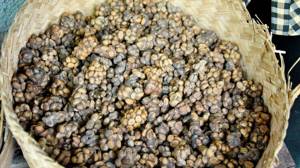
How is Luwak coffee made?
Collecting coffee beans from droppings in the wild is not relevant today. This is too time-consuming and labor-intensive a process for mass production. Therefore, animals are bred on farms.
People catch rodents and put them in cages. For six months they are fed green grains, collecting feces, excrement and excrement. This is how long it takes their stomach to produce the necessary enzymes.
In simple terms, the rodent eats and then poops out fermented coffee beans.
A Luwak eats up to one kilogram of coffee per day.
Next is the processing process, which includes the following steps:
- assembly and thorough cleaning of raw materials
- rinsing with water
- drying poop
- special roasting at high temperatures
Vigilant monitoring is also carried out over the cleanliness of the animal’s cage: they are regularly cleaned, washed, and ensured that there are no foreign odors.
Origin
The birthplace of the unusual type of Luwak coffee is Indonesia. Luwak is also produced in Vietnam. Musangs involved in the production process live in the wild or on special farms. Civets do not breed in captivity. For this reason, farm owners are forced to catch the animals. Musangs quickly become tame, but at night they can become aggressive.
To get 50 g of product, the civet must eat at least 1 kg of berries.
During the day, the animals most often sleep and practically do not eat. Feeding is carried out in the evening. The enzyme civet is produced in the body of musangs only 6 months a year. In order not to contain animals for the remaining time, farm owners release them into the wild.
The civet is a small animal. It cannot produce large quantities of coffee. Other animals can be used to produce the product on the farm: rabbits, elephants, porcupines, etc. However, the coffee obtained from them does not meet established standards due to the different composition of digestive fluids. For example, fruits fed to elephants do not receive the necessary enzyme treatment due to the animal's refusal to accept coffee in its pure form. Farm workers are forced to mix fruits into food in small quantities.
Interesting! Espresso coffee: what is it really?
How is it different from regular Arabica?
If you compare these two types of coffee, you can find differences in a variety of areas.
The first, of course, is the method. For Arabica beans, a standard technology familiar to everyone is used. In Kopi Luwak there is an unusual and at first glance strange method. All other opposites follow from this.
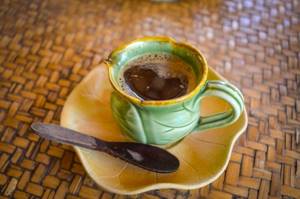
Luwak is characterized by a variety of flavors and a caramel-chocolate aroma.
For example, the first of the drinks has a fairly strong strength, tart aroma and taste. The second one is characterized by a variety of flavor shades and a caramel-chocolate aroma.
In terms of strength, Luwak does not reach the level of Arabica, which for some coffee lovers was a pleasant discovery. And the most important thing is the price. Luwak coffee is called the drink of the Gods. And already in this one can see the high cost, especially when compared with the familiar Arabica.
How does it affect the human body?
Drinking the drink affects the central nervous system. So one cup of Luwak coffee can increase a person’s productivity by 10-12%. This fact was confirmed by the American College of Sports Medicine research center.
Coffee also helps with your figure. The drink discourages cravings for foods that contain a lot of calories, and the caffeine itself helps fat cells break down faster.
Drinking coffee also stimulates brain activity.
The product itself does not make a person smarter, it “awakens” the intellect and pushes it to work.
It also has a positive effect on the immune system: the drink relieves inflammation and prevents infection from entering the body. So the positive effect of Luwak coffee on a person cannot be underestimated or ignored.
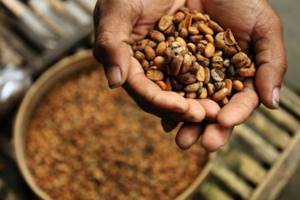
Luwak can increase human productivity by 10-12%
How to brew Luwak coffee
Luwak coffee in its homeland is never brewed in coffee machines, coffee pots, or in a Turkish coffee pot. There, the beans are ground to a powder, poured into a metal filter, placed on a coffee cup, and then boiling water is poured and they wait for the drink to pour drop by drop into the substituted container. If you follow all the traditions, then you need to add 2-3 ice cubes to a cup of coffee and be sure to wash this drink down with green tea.
Outside the countries in which Luwak is made, it is brewed using more modern methods, that is, it is mainly boiled in a Turk. It is prepared as follows:
- Filtered cold water is poured into the Turk.
- Coffee beans are ground and one teaspoon is poured into a cup of water.
- For good foaming, you need to put a few crystals of salt in the pot with boiling coffee.
- The light foam that forms during boiling must be carefully removed and placed in a cup. As soon as it begins to approach the edges of the Turk, the container must be removed from the heat, pour the coffee into a cup and stir.
Be sure to read: The culture of serving coffee in a restaurant
True experts and connoisseurs claim that Luwak can sometimes be combined with condensed milk, ginger root, spicy cloves, and cardamom.

Contraindications
It is not recommended to drink the drink for those who suffer from high blood pressure, insomnia, glaucoma, kidney failure and a number of other diseases. Of course, this does not mean that you need to completely stop using it. It must be kept to a minimum. Since coffee contributes to a sharp increase in cholesterol levels, it is contraindicated for those who already have this indicator above the norm.
The vast majority of any coffee drink causes physical and psychological dependence, so it is better not to abuse Luwak coffee, even for a healthy person.
Varieties and cost
Coffee leftist is not the only one of its kind. Black Ivory is extracted and produced in a similar way. The difference is that fermentation occurs in the stomachs of Indian elephants. The cost of this coffee starts at $1,080 per kilogram. One small serving of coffee in restaurants costs $50.
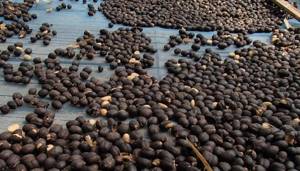
Black Ivory is extracted and produced in a similar way.
The next similar exotic product is the Jacques Bird coffee variety. Made in Brazil. In this case, the grains undergo initial processing in the stomach of the birds. At the same time, Brazilian farms use an organic method of farming, that is, they do not lock birds in cages, but recreate conditions for them that are as close as possible to wild ones. Prices start at $430 per kilogram.
Another variety is Coffee Terra Nera. It is made using palm civets. The quantity of this coffee is limited. You can find it only in one place: in a coffee shop in London. The cost exceeds $1,500 per kilogram.
Where to buy
Since coffee is popular among connoisseurs and has a high cost, some manufacturers counterfeit the product in order to get the greatest benefit.
No one would want to spend money on a fake, so to avoid any deception, it is better to go to the official website of the brand manufacturer. And now order coffee directly from him.
It is better to avoid intermediaries in the matter of purchasing, since many are greedy only for receiving benefits alone.
If you follow this simple rule, you will never come across fake Luwak coffee, since the manufacturer carefully monitors the production process.
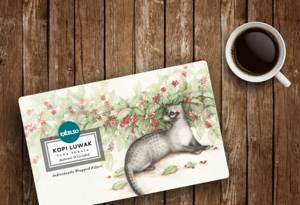
The original country of production of Kopi Luwak is Indonesia.
How much does the most expensive coffee cost?
The price of Luwak coffee starts from $600 per 1 kilogram of product. The most expensive and most delicious drink, according to connoisseurs, can be made from Vietnamese grains. 1 kg of such a fermented product costs at least $7 thousand. The price of elite grains is determined by some production features:
- Staff costs are high. Employees need to be paid. Often workers live on farms, which requires food and maintenance costs. The owner is forced to pay for the services of a veterinarian who monitors the health of the animals.
- The owner of the production combines 2 farms in one. The owner is obliged to take care not only of animals, but also of plants.
- The lack of technology in extracting grains from manure slows down the production process. You can get a small portion of the product per day.
- You can give coffee to animals no more than 2-3 times a week. The basis of the animals' diet is soups made from chicken broth with the addition of corn and rice. The civet's stomach is not capable of processing large portions of coffee. Excess grains will not receive the necessary taste and smell.
- The animal chooses the fruits independently. Civets eat only ripe “cherries”. Fruits that animals refuse to eat must be disposed of. This increases costs. On some plantations, animals are invited to choose fruits directly on the branches.
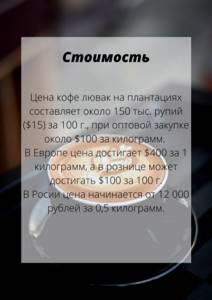
Kopi Luwak coffee obtained from wild animals can be more expensive than beans from farmed animals. This is due to the need to search for excrement. However, drinking such a drink is not always safe for humans. The animal that ate the fruit may have been unwell.
Some farms offer Luwak tasting. A cup of Luwak costs $5. However, many farms cooperate with coffee packaging companies, and visitors may be offered a pre-packaged product.
You can purchase luwak outside the countries of production in specialized stores. The seller must have a license to sell such products. Due to the high risk of counterfeiting, you should not buy the drink online. You should not purchase a product with big discounts, New Year promotions, etc. Genuine Luwak cannot be cheap.
Interesting! How is Americano coffee different from espresso?
How to cook Vietnamese properly
To prepare you will need: Luwak coffee beans, filter press, coffee grinder, water. First you need to prepare all the ingredients: boil water and grind the grains (the grinding should be medium).
Next, you can begin the cooking process:
- Place the filter press over a cup into which the finished drink will flow
- Pour ground coffee into the device and compact it
- Pour some water into the filter press. Then wait 30 seconds and add the remaining water
- Wait until all the liquid passes through the coffee
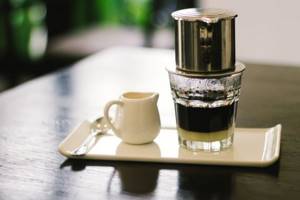
Afterwards, the drink can be consumed immediately. If desired, you can place the cup in a container of hot water before starting cooking. In this case, the coffee will not be very cold, because preparing the drink using the Vietnamese method takes a long period of time.
How to cook in Turk
Ingredients needed: coffee beans, water, coffee grinder, coffee grinder. It is necessary to grind the grains immediately before cooking. It should be taken into account that no more than 1-2 tablespoons of powder are placed in the Turk.
In order to brew a drink in this way, you need to put ground grains in a Turk and fill them with raw water. Next, you need to place the container on low heat on the stove.
You shouldn’t leave the coffee while cooking; on the contrary, you need to stir it periodically and watch it so that it doesn’t boil over.
As soon as the foam starts to rise, you need to wait until it rises to the very edges. After the Turk is removed from the stove. It is best to repeat the process 1-2 times.
Luwak coffee has an exquisite caramel-chocolate taste and aroma, despite the fact that the beans are processed in an original way. It can be served in combination with ice cream or milk. For those who like more tart additives, you can use spices, which include cinnamon, cardamom, lemon and a number of others. That is, you can use various favorite additives that will suit the drink at your personal discretion.
How to cook properly
There is a traditional way to brew the drink.
1-2 tsp. The ground product is poured into a metal glass, at the bottom of which there is a sieve. The glass is placed on another container and the product is poured with boiling water. The liquid seeps through a sieve into a container located under a metal vessel. The drink should be infused for at least 15-20 minutes before drinking.
In European countries, another brewing method has become widespread:
- The grain product is ground in a coffee grinder before use.
- Almost any container can be used for brewing. However, Kopi Luwak fans recommend using a silver-plated copper pot.
- Heat the container over low heat for 1-2 minutes.
- Pour 1 tsp into the prepared Turk and removed from the heat. product (for preparing 1 serving).
- The next step is to add salt at the tip of the knife. This ingredient will not affect the taste of the drink. Salt is needed to form and preserve the foam.
- Pour 1 glass of cold water into the Turk. It is advisable to use bottled rather than tap water.
- Place the drink on low heat and cook until foam appears. In order not to spoil the taste, it is necessary to remove the Turk from the heat at the first sign of boiling.
Indonesians add large amounts of sugar to luwak. However, it is advisable to drink an exotic drink without this ingredient in order to feel its unusual taste. Also, do not use cognac, liqueur, milk or cream. Luwak is not used to make coffee-based drinks such as lattes or cappuccinos.
Interesting! What is the difference between a latte and a latte macchiato
